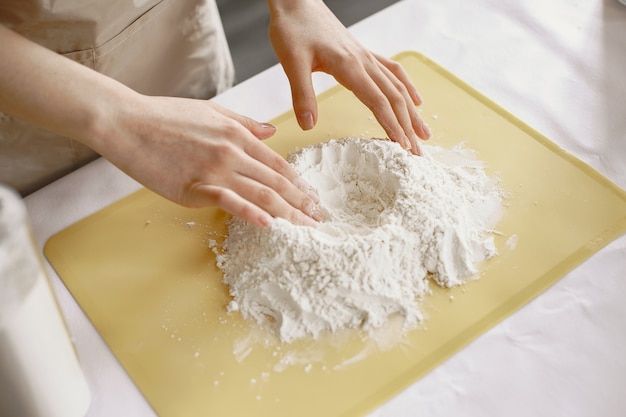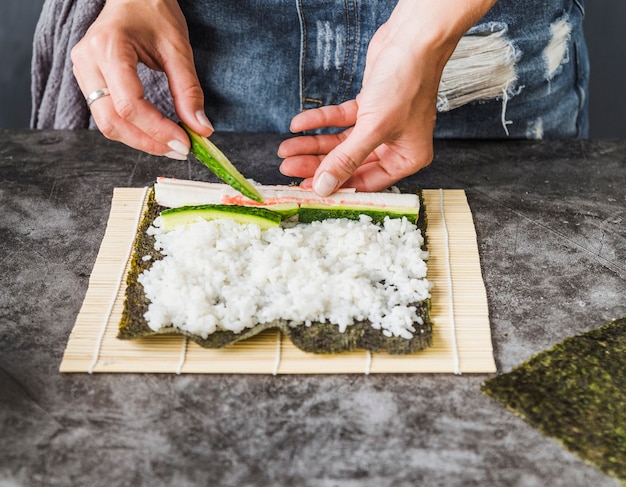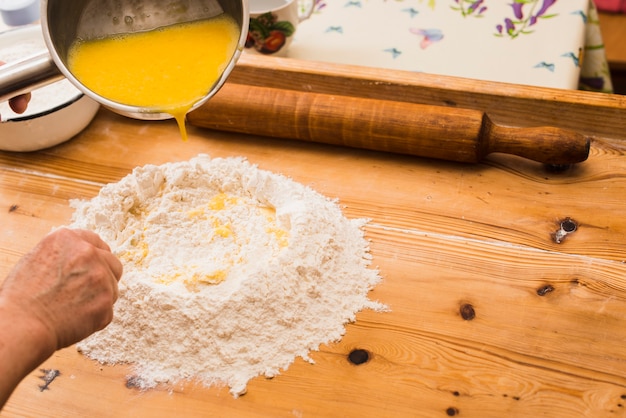Ah, rice! That culinary chameleon, so versatile it dances in and out of cuisines worldwide, a comforting constant in so many cultures. But as simple as it seems, cooking rice can be a bit of a gamble, a recipe for disaster if you’re not careful.
I’ve been there, trust me. I’ve had my fair share of culinary mishaps: rice that's mushy, sticky, or worse, stubbornly undercooked. But through trial and error, I've learned the art of achieving perfectly cooked rice - that fluffy, pillowy marvel that makes every dish sing. And today, I'm sharing those secrets with you, so you can ditch the rice cooker anxieties and conquer your kitchen!
(Part 1) The Rice Primer: Setting the Stage

Let's start with the basics. The world of rice is vast, overflowing with varieties each boasting its own personality. But regardless of the rice type, the golden rule is understanding the rice-to-water ratio and mastering the chosen cooking method.
The Rice-to-Water Ratio: A Culinary Balancing Act
The ratio of rice to water is the cornerstone of perfect rice. For most varieties, it's a 1:1 ratio – one cup of rice to one cup of water. However, certain rice types, like the aromatic basmati, prefer a slightly more generous 1:1.5 ratio.
Here's a handy table to guide you:
| Rice Type | rice to water ratio |
|---|---|
| white rice | 1:1 |
| basmati rice | 1:1.5 |
| brown rice | 1:2 |
| jasmine rice | 1:1.25 |
But don't get too caught up in the numbers, my friend. The best approach? Experiment! Taste, adjust, and find your perfect balance for each rice type.
The Absorption Method: Simple Yet Effective
The absorption method is the most classic way to cook rice, a timeless approach that's simple and reliable. Here's how it works:
1. Rinse and Repeat: Give your rice a thorough rinse under cold water. This washes away excess starch, preventing that sticky, gluey rice we all dread. Keep rinsing until the water runs clear.
2. The Pot is Calling: Add your rinsed rice and water to a saucepan. Now, here's a tip: use a saucepan with a tight-fitting lid. The tighter the seal, the more even the cooking.
3. Boil and Simmer: Bring the mixture to a rolling boil over high heat. Once you hear that bubbly symphony, reduce the heat to a gentle simmer, cover the pot snugly, and let it simmer for the recommended time.
4. The Rest is Key: Once the rice is cooked, don't rush to dig in! Let it rest, covered, for 10-15 minutes. This allows the steam to work its magic, transforming your rice into those delightful fluffy, separated grains.
Rice Cookers: Taking the Guesswork Out of Rice
Now, for those who prefer a hands-off approach, rice cookers are your new best friend. They do the hard work for you, adjusting the cooking time and heat to ensure perfectly cooked rice every time. Just throw in the rice and water, press a button, and voila! Your rice is ready.
(Part 2) rice cooking times: Navigating the Timelines

The duration of rice cooking depends on a few factors, so be sure to keep these in mind:
Rice Variety: Different rice varieties have their own cooking rhythms. White rice typically dances to the beat of 15-20 minutes, while brown rice takes a more leisurely 45-60 minutes.
Rice Quantity: The more rice you're cooking, the longer it'll need to simmer. Think of it as a group of friends: the more the merrier, but also the longer it takes to get everyone ready.
Cooking Method: Rice cooked in a rice cooker might take a tad longer than rice cooked on the stovetop. It's all about the cooking environment.
To give you a better grasp of cooking times, here's a table with estimated cooking times for various rice varieties:
| Rice Type | Cooking Time (Minutes) |
|---|---|
| White Rice | 15-20 |
| Basmati Rice | 10-15 |
| Brown Rice | 45-60 |
| Jasmine Rice | 12-15 |
Remember, these are just starting points. Use your senses! Check the rice for doneness. Cooked rice should be tender, fluffy, and the grains should separate easily. If it's still firm, give it a few more minutes. If it's too soft, reduce the cooking time next time.
(Part 3) Beyond the Basics: Adding Flavour and Texture

The absorption method is a great starting point, but let's elevate your rice game with some creative techniques.
Cooking Rice with Broth: A Symphony of Flavour
Adding broth instead of water adds a dimension of flavour to your rice. chicken broth, vegetable broth, mushroom broth - the options are endless, allowing you to tailor the flavour to your dish.
Spicing Things Up: Rice with an Aromatic Touch
Incorporate warm spices like cumin, turmeric, or coriander, and watch your rice blossom with flavour. Add them directly to the water or broth, or toast them lightly in a pan for a deeper, more pronounced flavour.
The pressure cooker Method: Fast and Furious
If you have a pressure cooker, it can be your culinary secret weapon for fast rice. Simply add the rice and water, seal it tight, and cook according to your pressure cooker's instructions. It's like magic!
(Part 4) Achieving Fluffiness: Tips and Tricks
Now, let's dive into the most important aspect: achieving that fluffy, pillowy rice that makes you sigh in contentment.
The Importance of Rinsing: It's Not Just for Show
Rinsing your rice is crucial. It removes excess starch, preventing that dreaded sticky rice. Rinse until the water runs clear. You'll be glad you did!
The Resting Time: Let the Steam Work its Magic
Once your rice is cooked, give it a 10-15 minute rest, covered. This allows the steam to work its magic, separating the grains and ensuring fluffy perfection.
Don't Overcook: A Recipe for Mushy Disaster
Overcooking is a culinary no-no. Keep a close eye on your rice and check it for doneness before it succumbs to mushiness.
The Power of a Fork: Fluff It Up!
After resting, gently fluff the rice with a fork. This helps separate the grains and creates that airy, fluffy texture we all crave.
The Right Pot: A Tight Seal is Crucial
Using a saucepan with a tight-fitting lid is essential. It traps the steam, ensuring your rice cooks evenly. It's all about the right tools for the job.
(Part 5) Rice Varieties: A culinary journey
The rice world is a fascinating one, each variety adding its own unique charm to the culinary landscape. Here's a glimpse into some of the most popular rice varieties:
White Rice: The Culinary Workhorse
White rice is a global favourite, known for its mild flavour and fluffy texture. Its versatility makes it a star in a wide range of dishes.
Brown Rice: A nutritional powerhouse
Brown rice is a whole grain, packed with nutrients and a nutty flavour. It offers a healthier alternative to white rice, though it takes longer to cook.
Basmati Rice: Aromatic and Elegant
Basmati rice, with its fragrant aroma and fluffy texture, is a staple in Indian and Pakistani cuisine. It's often used in dishes like biryani.
Jasmine Rice: Fragrant and Delicate
Jasmine rice, with its sweet, floral fragrance and soft texture, is a star in Southeast Asian cuisine. Its aroma alone is a feast for the senses.
wild rice: A Nutty Surprise
Wild rice, with its nutty flavour and chewy texture, is actually not rice at all, but the seed of a wild grass. It's a good source of protein and fibre, adding a unique twist to dishes.
(Part 6) Rice in the Kitchen: A Culinary Chameleon
Rice is so versatile, it can be a comforting side dish, the star of the show, or even a sweet treat.
Side Dish: A Versatile Companion
Rice is a classic side dish, a comforting hug to any meal. It partners beautifully with grilled chicken and fish, roasted vegetables, and so much more.
Main Course: A Culinary Star
rice bowls, stir-fries, rice salads - the possibilities are endless when it comes to rice-based main courses. It's a canvas for culinary creativity.
Dessert: Rice Goes Sweet
Yes, rice can even be a dessert star! rice pudding is a classic, but rice can also be incorporated into cakes and other sweet treats, adding a delightful twist.
(Part 7) Creative rice recipes: A culinary adventure
Now that you've mastered the basics, let's explore some creative rice recipes that will tantalize your taste buds.
Lemon and Herb Rice: A Simple Yet Delicious Side
This dish is a perfect companion for grilled fish or chicken.
1 cup white rice
1 cup chicken or vegetable broth
1 lemon, juiced
2 tablespoons chopped fresh herbs (parsley, dill, or thyme)
Salt and pepper to taste
Rinse the rice and add it to a saucepan. Add the broth, lemon juice, herbs, salt, and pepper. Bring to a boil, then reduce heat, cover, and simmer for 15-20 minutes. Let the rice rest, covered, for 10 minutes before serving.
Spanish Paella: A Vibrant and Flavorful Fiesta
This vibrant rice dish is a culinary adventure.
1 cup white rice
2 cups chicken or vegetable broth
1/2 cup chopped onion
1/2 cup chopped bell pepper
1/2 cup chopped tomatoes
1/4 cup saffron threads
1/2 cup frozen peas
1/4 cup chopped chorizo
Salt and pepper to taste
Olive oil
In a large, wide pan, heat olive oil over medium heat. Add the onion, bell pepper, and tomatoes and cook until softened. Add the chorizo and cook until browned. Stir in the rice, broth, saffron threads, salt, and pepper. Bring to a boil, then reduce heat, cover, and simmer for 15-20 minutes. Stir in the peas and serve immediately.
Coconut Rice: A Fragrant and Creamy Delight
This fragrant and creamy rice dish is a staple in many Asian cuisines.
1 cup white rice
1 cup coconut milk
1/2 cup water
1/4 teaspoon salt
1 tablespoon butter
Rinse the rice and add it to a saucepan. Add the coconut milk, water, salt, and butter. Bring to a boil, then reduce heat, cover, and simmer for 15-20 minutes. Let the rice rest, covered, for 10 minutes before serving.
(Part 8) FAQs: The Final Word on Rice Cooking
Let's tackle some common questions about rice cooking.
1. Can I Use Any Type of Rice for Any Dish?
While some rice varieties are more versatile, others are better suited to specific dishes. Basmati rice, for example, shines in Indian dishes, while jasmine rice is perfect for Thai curries.
2. What Happens If I Add Too Much Water?
Too much water leads to mushy, watery rice. Always err on the side of less water. You can always add a little more if needed.
3. What If My Rice Is Undercooked?
If your rice is undercooked, continue cooking it for a few more minutes. You can also add a little water, but be cautious not to overcook it.
4. How Do I Know When the Rice Is Cooked?
Cooked rice should be tender, fluffy, and the grains should separate easily. If it's still firm, continue cooking. If it's too soft, reduce the cooking time next time.
5. Can I Reheat Rice?
Yes, you can reheat rice. The best way is to add a little water or broth to a saucepan, cover, and steam it over low heat. You can also reheat rice in the microwave, but watch out for overcooking.
There you have it, my friend! The ultimate guide to perfect rice cooking times. Now, go forth and cook those fluffy, flavorful rice dreams!
Everyone is watching

Corn on the Cob: The Ultimate Guide to Perfectly Cooked Ears
Healthy MealsAh, corn on the cob. Just the name evokes images of sunny days, barbecues, and that sweet, juicy flavour that ...

Perfect Pork Roast Oven Cooking Time: A Guide to Delicious Results
Healthy MealsThere's something truly satisfying about a perfectly roasted pork. The aroma alone is enough to make your mout...

Ham Cooking Time: How Long to Bake, Smoke, or Boil a Delicious Ham
Healthy MealsAh, ham. It's a classic, isn't it? A real crowd-pleaser, especially around holidays. And when done right, it'...

Scallops: The Ultimate Guide to Perfect Cooking
Healthy MealsAh, scallops. Those delicate, sweet, and utterly delicious morsels of the sea. They hold a special place in my...

Spaghetti Squash: The Ultimate Guide to Cooking and Serving
Healthy MealsRemember that time you saw spaghetti squash at the supermarket, looking all bumpy and strange, and thought, "W...
